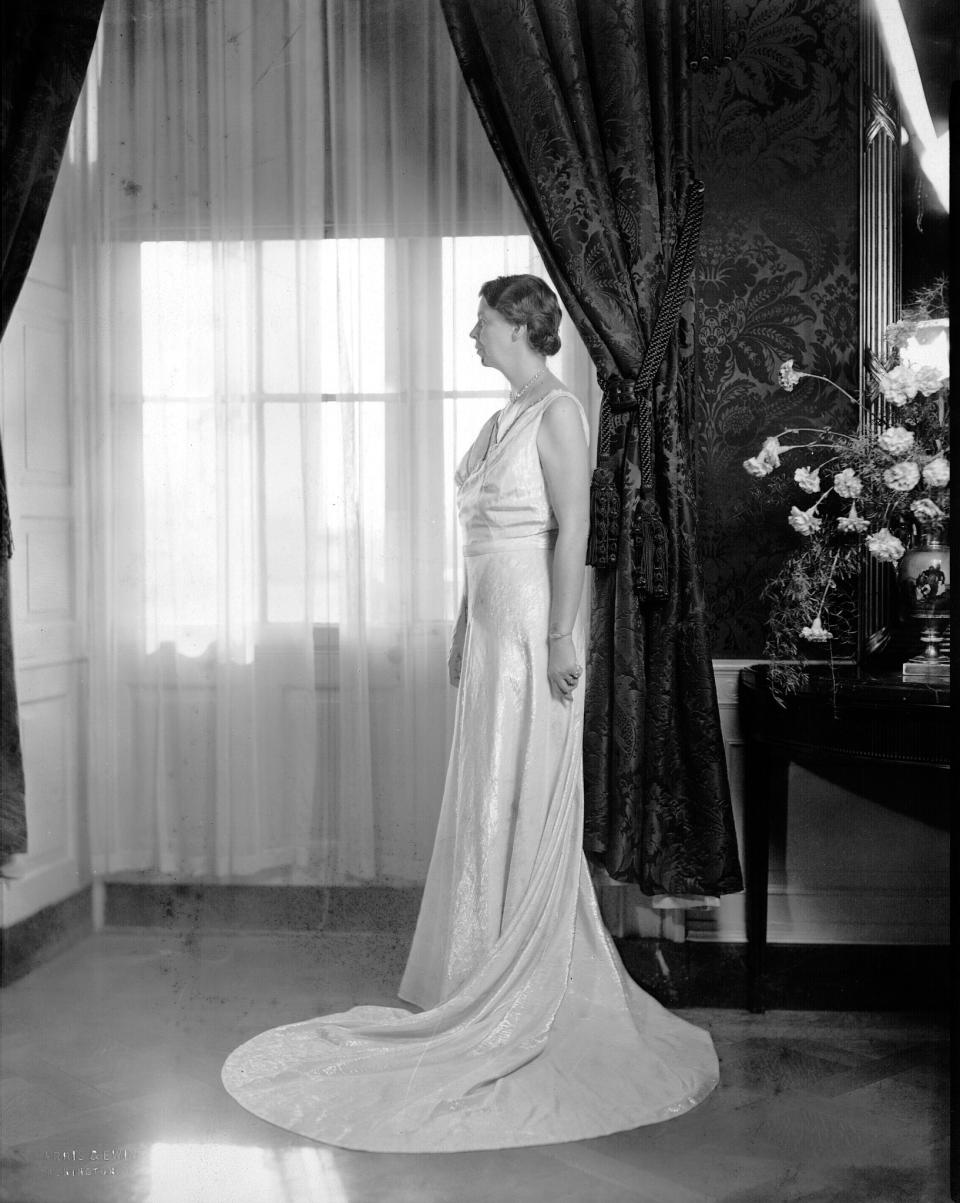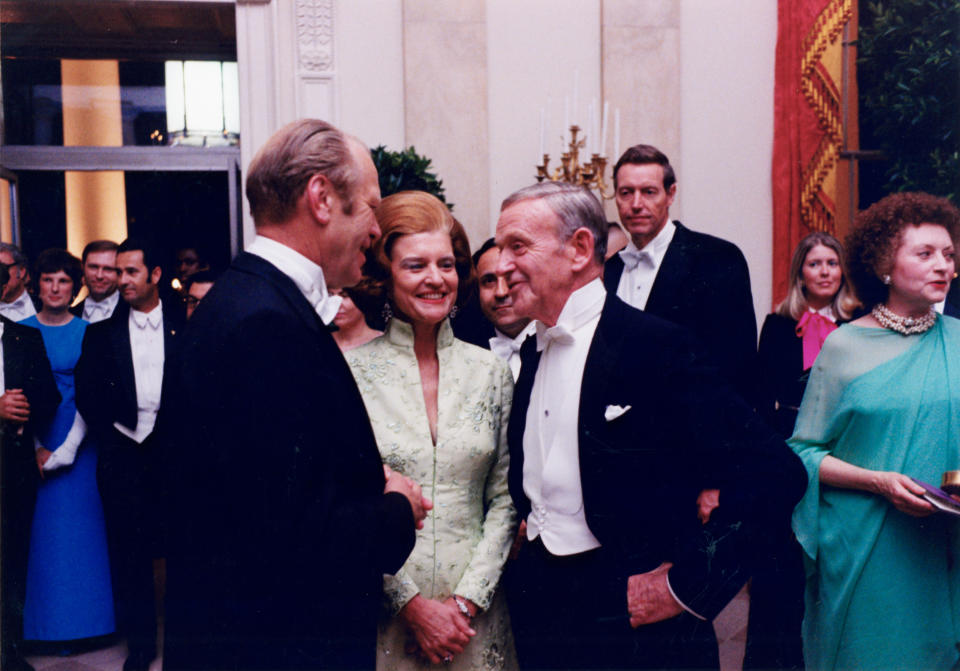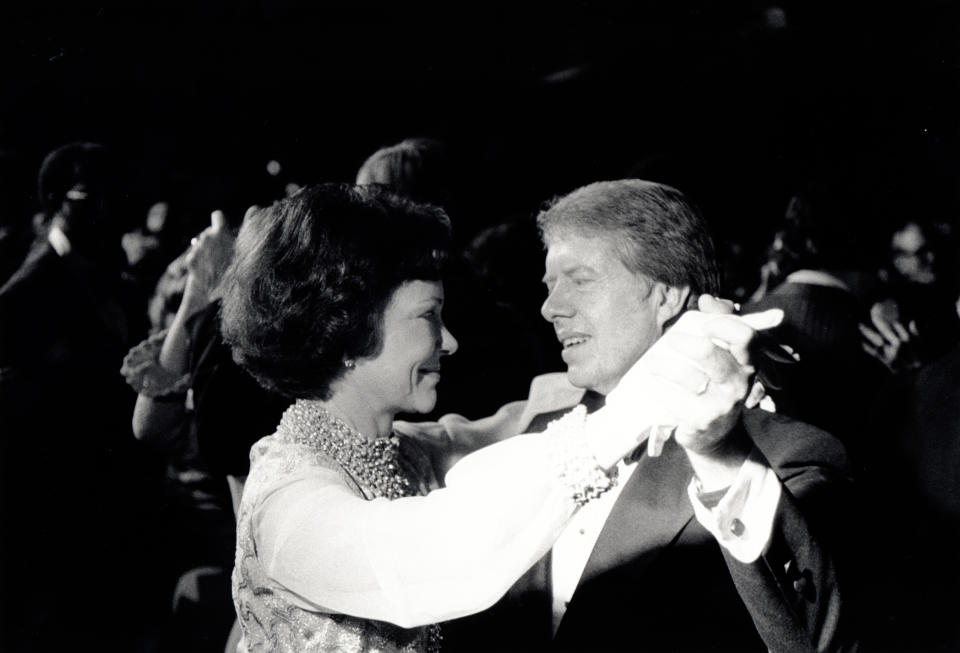Untold Stories of Designers Who Dressed First Ladies Is Focus of New Virtual Exhibition

Eight unsung and primarily lesser-known seamstresses, dressmakers and fashion designers, who dressed first ladies for some essential public appearances, are getting their due in the new digital exhibition, “Glamour and Innovation: The Women Behind the Seams of Fashion at the White House.”
Organized by the White House Historical Association, the exhibit has been carried out through a new academic partnership with New York University’s Steinhardt School of Culture, Education and Human Development. Photos, bios, portraits and press clippings will enlighten online visitors about the careers, struggles and in some cases racial discrimination that some of the featured designers dealt with. Elizabeth Hobbs Keckley, for example, who designed dresses for Mary Todd Lincoln, was enslaved at birth. And Ann Lowe, who designed Jacqueline Kennedy’s wedding gown, was said to have insisted on delivering it through the front door after initially having been told by staff to use the rear entrance. She also never received public credit for creating the first lady’s gown, a reality that in today’s times would have catapulted her career.
More from WWD
Met Costume Institute Exhibits 'In America: A Lexicon of Fashion' for 75th Anniversary
Hubert de Givenchy's 1970s Black Cabine Models Made a Statement About Diversity
For “Glamour and Innovation,” the association enlisted its first digital exhibit fellow MA/MS Costume Studies student Maegan Jenkins. Aiming to reveal some of the untold stories about the designers, she dreamt up the exhibition, dug in with research and built the project with the WHHA’s David M. Rubenstein National Center for White House History’s Digital Library.
The six other designers that are being spotlighted in the show are Sally Milgrim, who made Eleanor Roosevelt’s 1933 inaugural gown; Nettie Rosenstein, who whipped up inaugural attire for Mamie Eisenhower in 1953 and again in 1957; Ethel Frankau, who designed Kennedy’s inaugural gown; Karen Stark, the creative behind Patricia Nixon’s inaugural dress in 1969; Mary Matise, who suited up Rosalyn Carter at the inaugural and Frankie Welch, whose scarves were worn by Nixon, Carter, Betty Ford and Lady Bird Johnson.

Courtesy White House Historical Association
In an interview Thursday, the WHHA’s senior vice president and director of the David M. Rubenstein National Center for White House History Colleen Shogan said assembling many of the dresses in a physical exhibit would be very difficult, since some of them are on permanent display in the Smithsonian American History Museum. The WHHA’s vast digital collection made the virtual approach a way to connect with people all across the U.S. and all around the world, she said. The aim is to reach “thousands and thousands.”
“What Maegan says is some of these women weren’t from marginalized backgrounds — some were — but all of their stories are marginalized, because [many] people didn’t know what they had done or what their contributions had been, particularly in relation to the fashion of first ladies over the past 100 years,” Shogan said.
As to why the stories behind these entrepreneurial women haven’t come to the forefront sooner, Shogan singled out Lowe. “Ann was an African American fashion designer, and perhaps one of the first prominent ones in the United States. She designed and created Jackie Kennedy’s wedding dress and she was not credited with that in all the prominent newspaper accounts [of the 1953 wedding in Newport, R.I.]” adding that Lowe’s recognition came years later. Some of Lowe’s dresses are currently on view in “In America: An Anthology of Fashion” at the Metropolitan Museum of Art. Next year the designer, whom The Saturday Evening Post referred to in 1964 as “society’s best-kept secret,” will be the subject of a major exhibition at the Winterthur Museum, Garden and Library in Delaware. Bowing in September 2023, that exhibition will highlight Lowe’s career from the ‘20s through the ‘60s and her vital contribution to American culture.
In addition to the ivory-colored silk dress with a portrait neckline and a bouffant skirt covered with wax flowers and a lace veil, Lowe also designed all of the pink taffeta bridesmaid dresses for Kennedy’s bridal party. Although Shogan could not personally verify the story of Lowe’s wedding day delivery, she referenced a written account she had read. Shogan said, “She had quite a few dresses to deliver that day. They said that when she arrived at the home, where the wedding was taking place, she was told to go in the back door or the side door instead of the front door. She insisted that she would walk through the front door with the dresses and she was allowed to do so to deliver the dresses to Jacqueline Bouvier.”
Shogan also pointed to Welch’s relatively unsung status outside of the Beltway, despite having worked with a handful of first ladies. Opening the Frankie Welch of Alexandria store in the city’s Old Town neighborhood in 1963 made her somewhat known, but not to the degree of the more high-profile labels tied to New York-based designers at that time.
“Sometimes first ladies choose to work with designers who are lesser-known. And as a result their stories don’t get to be told as opposed to affixing them to a really prominent label that people know about,” she said.

White House Historical Association
In 1967, Welch, who was of Cherokee ancestry, was asked to design something truly American that the White House and U.S. Stare Department could use as gifts. A scarf with Sequoyah’s Cherokee syllabary was created. Over time her “Cherokee Alphabet” scarf was sold at retail it remained a bestseller through 40 printings and numerous design modifications. Initial profits for the item were donated to the Indian Education Fund.
Around that time and into the ‘70s, “things of course, hadn’t changed but they were in the process of changing,” Shogan said. “The idea of bringing diversity and other cultural heritages into fashion design started to happen. Rather than only be influenced by the French, the idea of being influenced by other traditional American resources and history was looked on very favorably.”
Welch’s bipartisan approach to designing for first ladies and wives of other Washington dignitaries also made her interesting. Shogan said, “She started with Lady Bird, and I think Pat Nixon said, ‘Hey, you aren’t just going to design for Democrats. You’re going to design for Republicans, too. Frankie Welch said, ‘Sure, I will design for first ladies across the aisle.”
While the role of fashion designers dressing first ladies has increasingly become more politicized in recent administrations, Shogan said Welch embraced bipartisanship. “You want to talk about the intersection of fashion and feminism. She viewed herself as a female entrepreneur. She was the owner of a few boutiques. The [first] the boutique and the house, where they lived was one in the same for a period of time, until she made enough money to move the family out of the boutique….”As she said, she took great pride in her business and in making money as an early female entrepreneur. She spoke publicly about the importance of women earning most for themselves and not being dependent on their spouses for an income.”
While First Lady Jill Biden has been more buttoned-up than her some of her predecessors about the designers she chooses to wear, her tenure, as well as those of other more recent first ladies is not covered in the new exhibition. Given the association’s focus on history, organizers opted to stop the timeline with Welch’s and Matise’s work with Carter.
“We cut things off around 1980. To tell you the truth, just anecdotally, I haven’t read a lot about Jill Biden and who she has chosen to wear,” Shogan said.

White House Historical Association
Conversely, the decision to share information about designer choices can change lives beyond the designers who dress first ladies to generations of people, who might decide to pursue the field. Shogan said, “At the White House Historical Association, we are always trying to find understood stories, lesser-known stories and diverse stories. Of course, we have had 45 men, who have occupied the White House as president. [There have been] no women [in that capacity.] But we look for ways to tell the stories of women, who have played a role in the history of the White House. We thought that this exhibit was a perfect way to tell stories that people wouldn’t be overtly or immediately familiar with.”
Asked if it is a little unfortunate that some of the stories about these eight designers is still a history lesson all these years later, Shogan said, “You always want to have inclusive history done. The reason you want to have these stories told is that the only way that you can be accurate in the telling of histories is if you tell all of the history, even the things that people don’t know about. In some ways, we’re just striving to tell the most accurate [history]. If we’re going to talk about fashion in the White House and fashion and first ladies, we can focus on some of the most prominent stories. But we can dig a little further to find some really interesting stories that will illuminate that there were a lot of female designers that really did some amazing work that influenced the history of fashion and enabled first ladies to make personal statements about what they wore.”
Best of WWD
Sign up for WWD's Newsletter. For the latest news, follow us on Twitter, Facebook, and Instagram.

 Yahoo Movies
Yahoo Movies 
